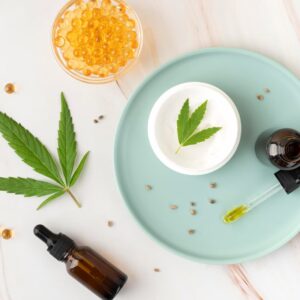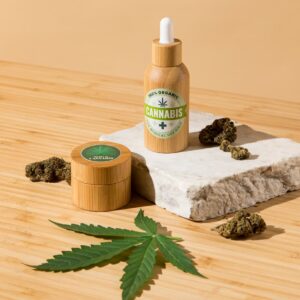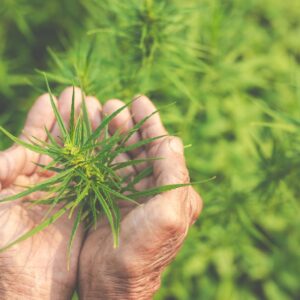The legal cannabis market has introduced a range of product categories in recent years, with cannabis concentrates earning a place alongside traditional options like flower and edibles. From dispensary menus to product reviews, concentrates are increasingly part of the modern cannabis product conversation, appreciated for their potency, versatility, and variety of textures.
Yet for those less familiar with these products, the terminology and types of concentrates can feel overwhelming. What exactly makes a concentrate different from other cannabis formats? What are the various forms, like shatter, wax, and live resin? And how have concentrates shaped today’s cannabis product offerings?
This article offers a straightforward, fact-based overview of cannabis concentrates, what they are, how they’re made, and the characteristics that define them. By the end, you’ll have a clearer understanding of how concentrates fit within the broader cannabis product space.
What Are Cannabis Concentrates?
At their core, cannabis concentrates are products made by extracting cannabinoids and terpenes from cannabis plant material, resulting in a highly concentrated form of these active compounds. The goal is to capture the most desirable parts of the plant, typically THC, CBD, and aromatic terpenes, while removing excess plant matter like leaves and stems.
These extracts come in a variety of forms, each with its own texture, consistency, and cannabinoid profile.
Popular Types of Cannabis Concentrates
While the category is broad, a few concentrate types have become staples across legal cannabis markets:
- Shatter: Recognized by its glass-like texture, shatter breaks apart easily and typically has a translucent, amber appearance. It’s known for high THC content and purity.
- Wax: Softer and more malleable than shatter, wax has a cloudy appearance and comes in textures ranging from crumbly to sticky. Its versatility makes it one of the most common concentrate types.
- Live Resin: Made using fresh-frozen cannabis plants instead of dried flower, live resin preserves more terpenes, offering richer aroma and flavor profiles.
- Rosin: A solventless concentrate created through heat and pressure, rosin is popular for those seeking extracts made without chemical solvents.
- Oil: Cannabis oils are often used in vape cartridges and tinctures, with cannabinoid content tailored to various preferences and needs.
Each of these forms differs in production methods, texture, and cannabinoid concentration.
How Cannabis Concentrates Are Made
The production of cannabis concentrates involves separating cannabinoids and terpenes from the plant, typically through one of two methods:
- Solvent-Based Extraction: Techniques using butane, propane, CO₂, or ethanol to dissolve cannabinoids and terpenes, followed by purging to remove residual solvents. This is common for products like shatter, wax, and live resin.
- Solventless Extraction: Mechanical methods like pressing (for rosin) or ice-water separation (for bubble hash) that don’t require chemical solvents.
The extraction technique impacts the final product’s potency, consistency, and flavor.
Why Concentrates Hold a Place in Today’s Cannabis Markets
Beyond their potency, concentrates are valued for offering a broad range of product experiences. The legal cannabis industry has seen concentrate categories grow steadily alongside edibles and flower. A 2022 report from Headset, a cannabis market research firm, noted that concentrates account for about 10-15% of legal cannabis sales in several North American markets.
Factors contributing to this growth include:
- A diverse product selection appeals to both enthusiasts and new consumers.
- Advances in extraction technology are improving product purity and consistency.
- Increasing interest in terpene-rich options like live resin for those seeking nuanced aroma and flavor profiles.
Common Characteristics of Concentrates
Despite their differences, cannabis concentrates typically share a few key characteristics:
- Higher Cannabinoid Content: Concentrates often range from 60% to 90 %+ THC or CBD, compared to 10-30% in dried flowers.
- Distinct Textures: Ranging from brittle (shatter) to oily (distillate), the form factor impacts storage, packaging, and consumer appeal.
- Aromatic Profiles: Terpenes contribute to concentrates’ scent and taste, particularly in solventless or live resin products.
- Potency Regulation: Legal markets often set potency caps for retail products and require clear labeling of cannabinoid content.
Glossary of Common Concentrate Terms
To help demystify some of the terminology you might encounter on dispensary menus:
- Terpenes: Aromatic compounds found in cannabis (and many plants), responsible for scent and contributing to the product experience.
- Full-Spectrum: Extracts containing a wide range of cannabinoids and terpenes from the original plant.
- Isolate: Pure cannabinoid extract, typically THC or CBD, without other plant compounds.
- Decarboxylation: The heating process used to activate cannabinoids, making them bioavailable.
Regulations and Labeling Practices
Legal cannabis markets regulate concentrates similarly to other products, with strict potency limits, contaminant testing, and clear product labeling. Packaging typically displays:
- Total THC and CBD content
- Extraction method
- Ingredients and additives (if any)
- Legal disclaimers and storage instructions
This transparency helps maintain safety and consistency within the rapidly evolving market.
The Takeaway on Cannabis Concentrates: A Growing Corner of the Market
Cannabis concentrates have become a defining category in today’s legal cannabis landscape, offering a diverse selection of products with distinct characteristics, textures, and potencies. From shatter and wax to live resin and rosin, each type reflects specific extraction methods and consumer preferences, contributing to a growing, evolving market.
Whether you’re browsing dispensary menus or simply staying informed about how the cannabis industry continues to expand, having a clear grasp of concentrate types and how they’re produced helps cut through the noise and adds context to product labels, news headlines, and market trends.
Curious about how concentrates fit into today’s broader cannabis product lineup? Explore more articles and market insights on our website, designed to help you stay up to date with factual, approachable cannabis education.







